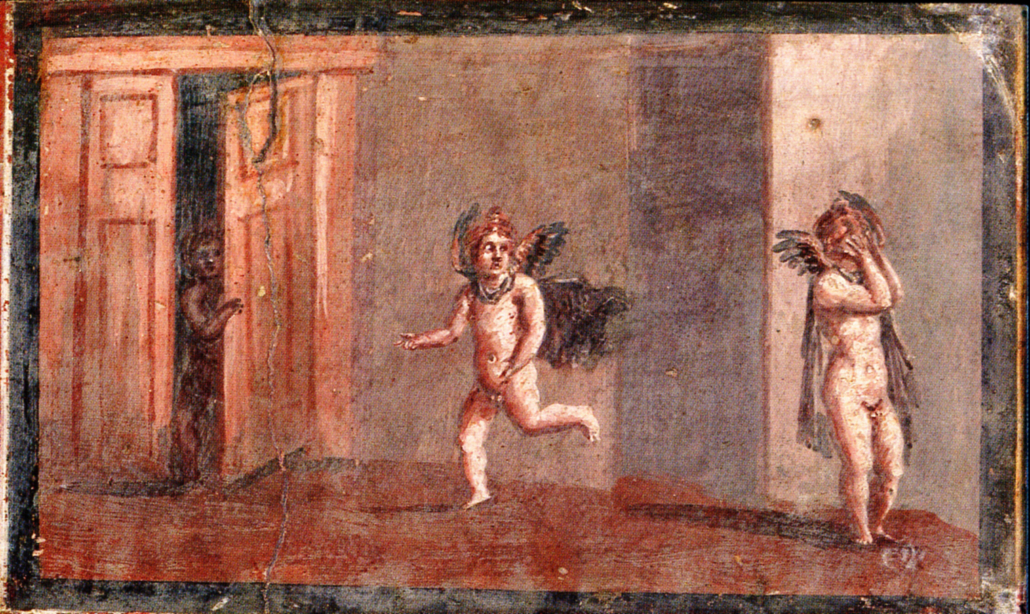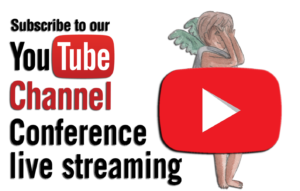“Play Hide and Seek in Herculaneum” is the new animation realised by Steve Simons and Sonya Nevin (Panoply) for Locus Ludi.
This delicate animation, evoking the carefree happiness of loved children and hope, is meant as a gesture of solidarity with all our Italian friends, our colleagues and the many people throughout Europe and the world who are currently isolated. In the past as today, play and games can provide suspended moments of shared happiness. The animation is based on a wall painting from the so-called cryptoporticus of the House of the Stags (Casa dei Cervi), one of the largest dwellings in Herculaneum with a beautiful terrace that once overlooked the sea.
The eruption of Mount Vesuvius in 79 CE destroyed the city but the pyroclastic flow preserved the splendour of this wealthy house. Children may have actually played hide and seek in the corridor which was decorated with a series of small panels depicting Erotes engaged in various lively activities.
The scene is a perfect example of the contribution of images to the history of play and games: it preserves the memory of children’s social life ; they perform a collective activity, hide and seek, which otherwise left no archaeological trace and belongs to an immaterial heritage. The picture shares an imaginary, cheerful world where children are no longer mortal, but divine: they are depicted as carefree winged supernatural beings.
Images, however, do not provide us with game rules. The Dictionary (Onomasticon) written by Julius Pollux in the 2nd century CE provides a list of games with descriptions. Pollux lists four variants of hide and seek games : Myinda, Apodidraskinda, Chalké Muia, some of which are still practiced today. But which one is illustrated in Herculaneum? The animations skilfully propose different hypotheses.
 Herculaneum, Casa dei cervi 23 x 36 cm © Napoli, MAN 9178
Herculaneum, Casa dei cervi 23 x 36 cm © Napoli, MAN 9178
> Check out our Facebook page and the designers’ blog, Panoply
Exhibition “From Board to Boardgame. Archaeology of Video Game” (“De la case au pixel. Archéologie du jeu vidéo”) at the Swiss Museum of Games 10.02.2024-06.01.2025
More about Games and maths for schoolchildren
with the support of SNF Agora Grant “Abacus: calculer, c’est jouer”
Test the abacus, test the Pente Grammai game
Période de confinement oblige, petits et grands enfants doivent parfois déployer des trésors d’imagination pour illuminer leurs journées. Si vous êtes à cours d’idées, pourquoi ne pas vous inspirer de jeux antiques?

